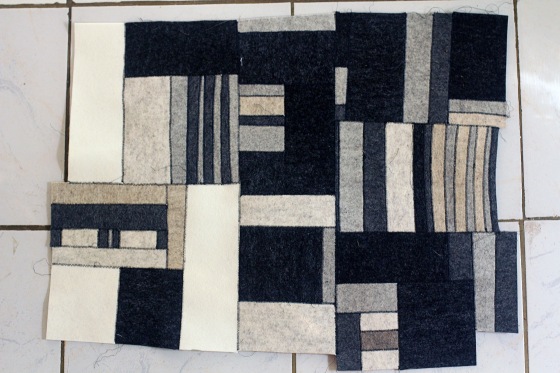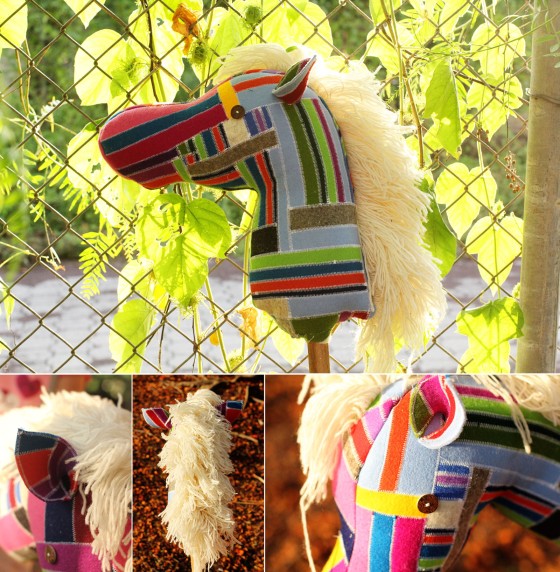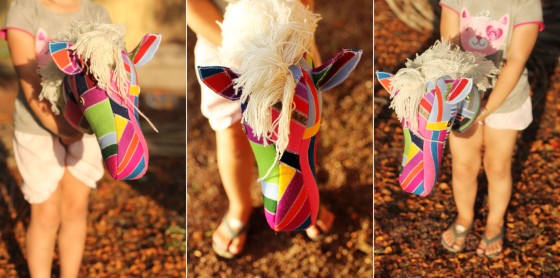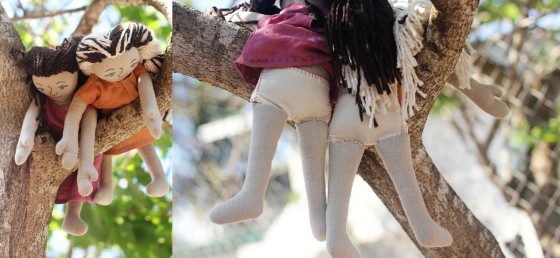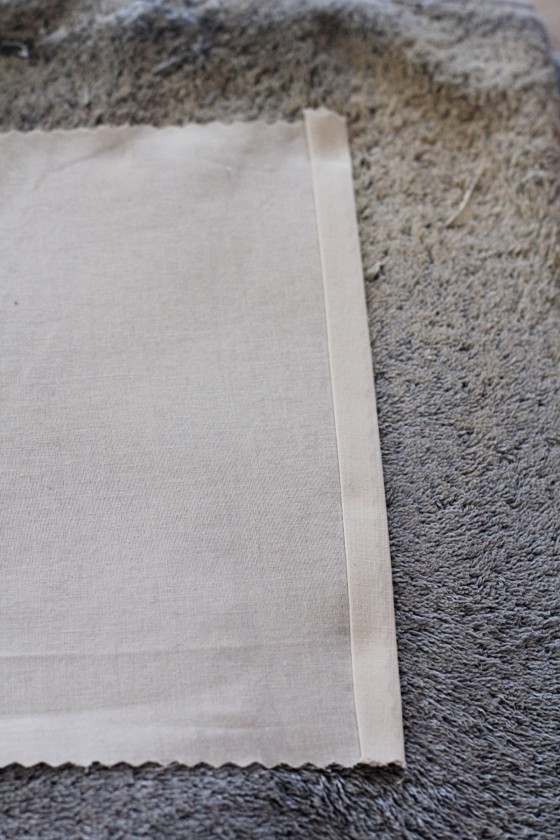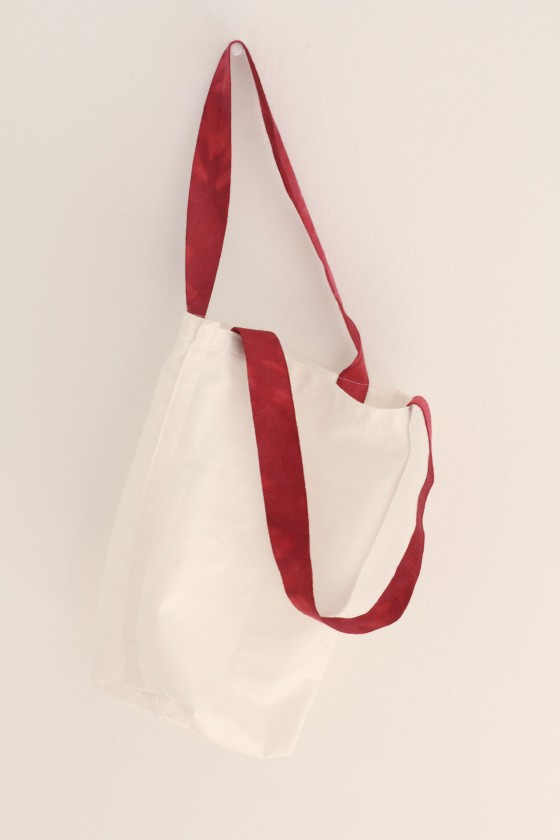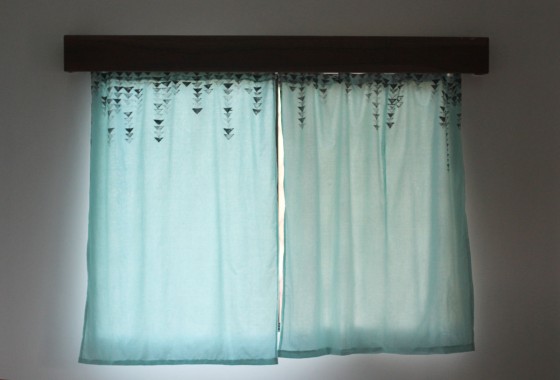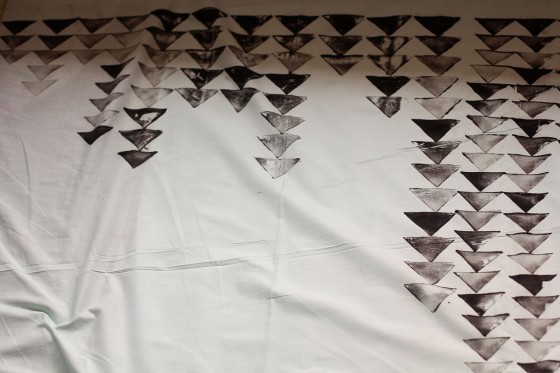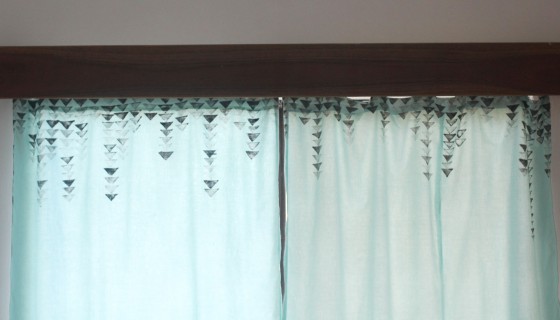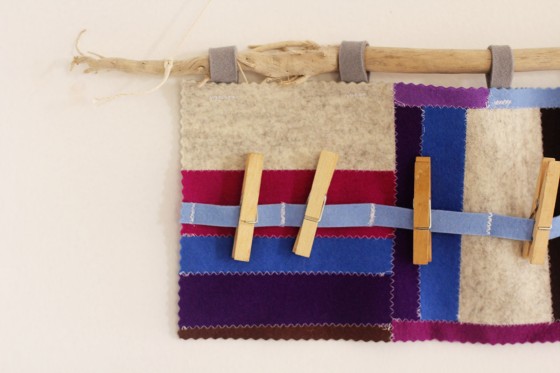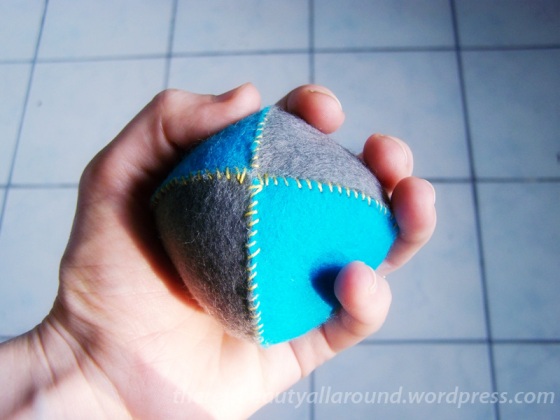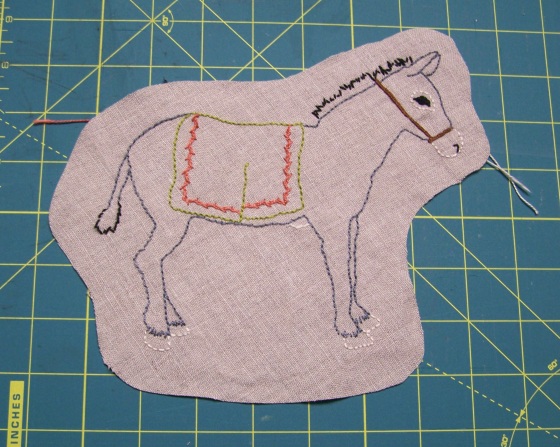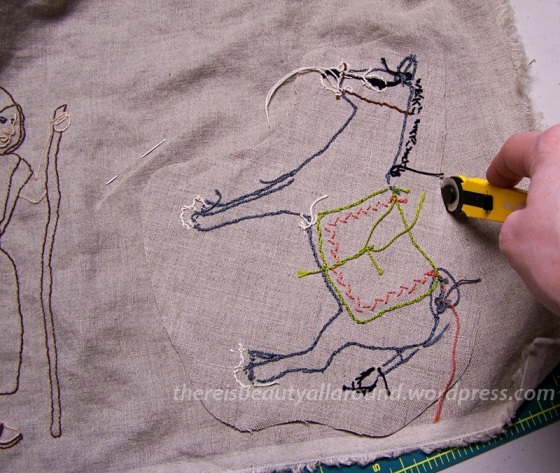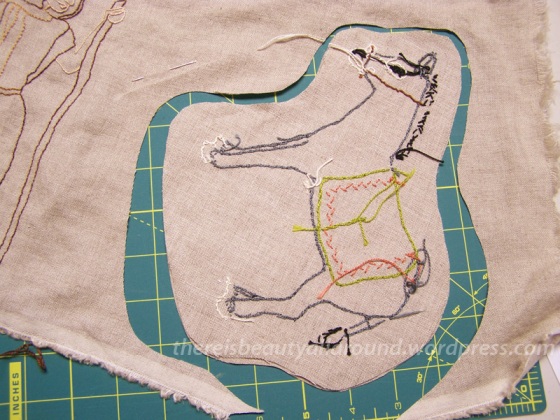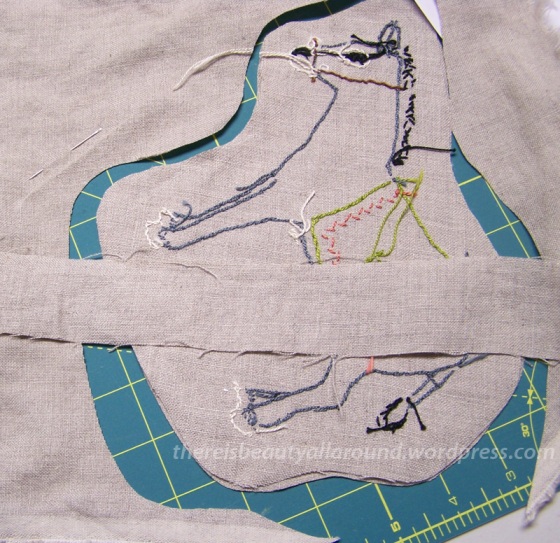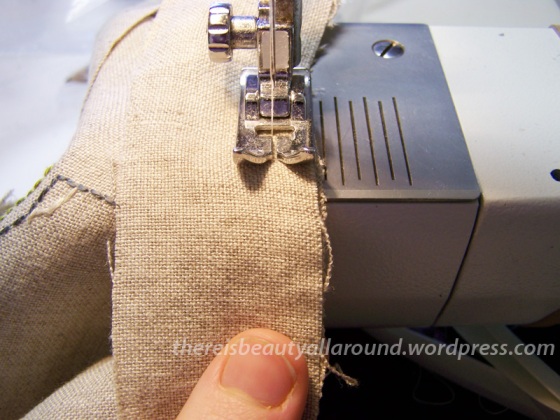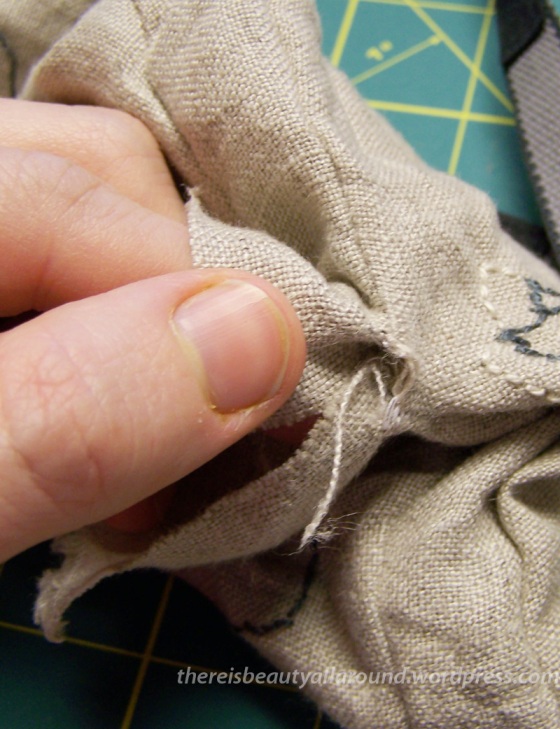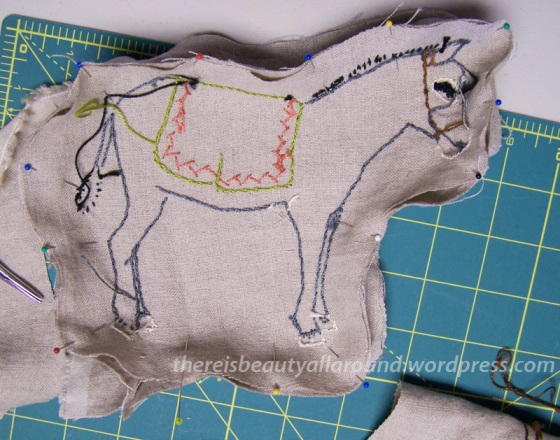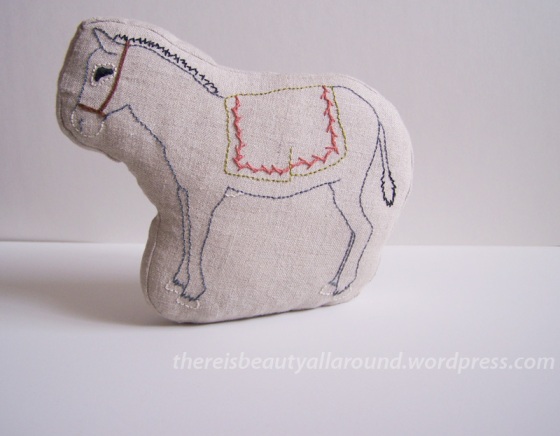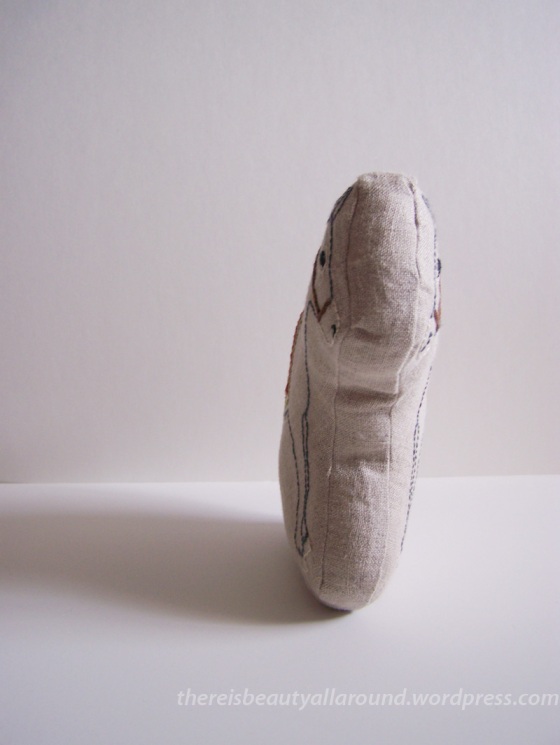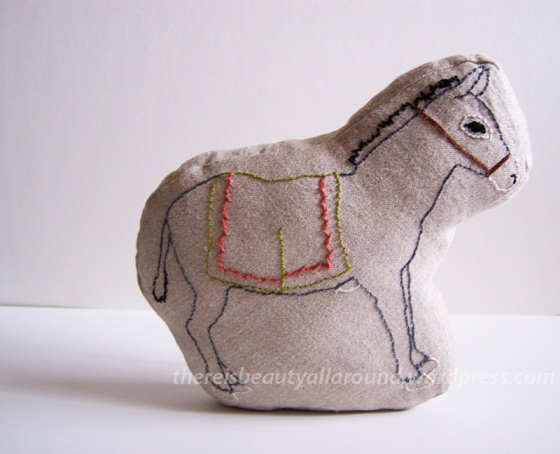 So, I am here. Really. I’ve just been taking a loooong off-screen break. I guess I just needed it. But with the new year, naturally I thought I might be a good time for a blog reboot. A just over year ago I was frantically packing my bags down to the last ounce to prepare to head back to Galapagos.
So, I am here. Really. I’ve just been taking a loooong off-screen break. I guess I just needed it. But with the new year, naturally I thought I might be a good time for a blog reboot. A just over year ago I was frantically packing my bags down to the last ounce to prepare to head back to Galapagos.
But this year, I have no immediate travel plans. In fact, we might not board flight the whole year. But that’s okay. We’ve entered a new phase of our lives as a family of five, and we’re settling into it, for the next little while, at least. Anyways, enough talk. Here is a project that I started a year ago, and I’ve just now finished it up. Some scrappy felt hobby horses. 
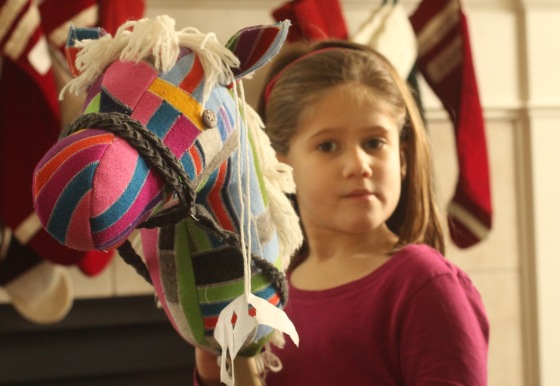
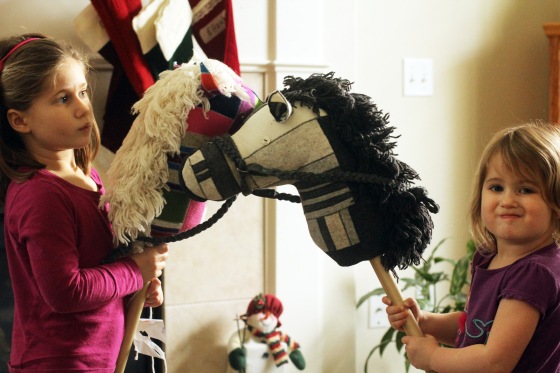


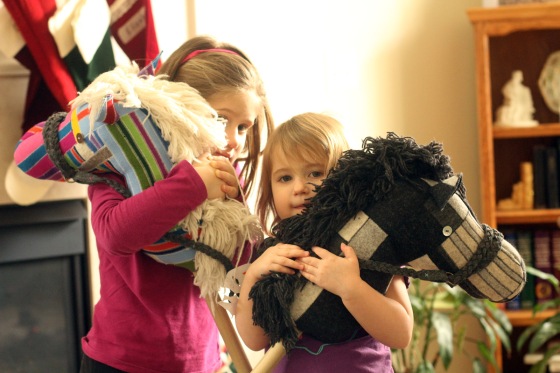
 Oh, you say you’ve seen this before? Well, you have. But, in case you were interested in making your own, I made a second one (well, I had to anyways, because I pretty much have to make two of everything these days; luckily sweet girl number three hasn’t demanded too much crafting from me yet) and decided to make a tutorial for you guys.
Oh, you say you’ve seen this before? Well, you have. But, in case you were interested in making your own, I made a second one (well, I had to anyways, because I pretty much have to make two of everything these days; luckily sweet girl number three hasn’t demanded too much crafting from me yet) and decided to make a tutorial for you guys.
(Just so you know, it took much longer than I expected it would to put this tutorial together, and I’m sorry if there are any errors; pattern-making isn’t my forte.)
Here we go.
Materials:
- Felt scraps (a whole lot, in squarish shapes, are best; of course, you can always use whole pieces of felt or really any material you’ll want) You’ll need enough to make approximately a 2-foot square piece of material to cut your pattern pieces out of.
- Stuffing (I prefer wool for quality reasons, but whatever you want is fine)
- Thread (you’ll want some heavy-duty stuff, especially for hand stitching on the eyes, ears, and finishing the closure)
- Buttons for the eyes
- A 1-inch thick dowel, about 3 to 5 feet long, depending on how tall you want your horse to be.
- Yarn in a coordinating color
- Freezer paper (for tracing your pattern, it’s my favorite way to cut out felt)
Tools:
- Scissors and/or rotary cutter
- Sewing machine
- Cutting mat
- Iron
- Stiff cardboard or a book, about 5 inches wide and 8 inches long.
Make your scrappy piece of felt (if you are using a solid piece of fabric or felt, you can skip this part)
- Basically, you will be butting up two pieces of felt together and zigzagging over both sides so that the two pieces become one. (See this post for a better explanation)
- As you go along, continue building up your scrappy piece with more pieces. I like to make several scrappy blocks and then sewing this big blocks to each other to make your big piece of fabric.
- Print the template. Click on these links for the four pages of the template: gusset gusset 2 horse neck 1 horse neck 2
- You’ll need to choose “print” under the tools menu. I am not a professional pattern maker, so these may look a little rough, but hey, it’s a free tutorial.
- Cut out you’re pieces and assemble the ones that are in segments.
- Then, you’ll want to trace your pattern pieces onto freezer paper (ignore the big notch in the horse’s head down in that picture, I was just using a scrap of freezer paper and it didn’t all fit). The long gusset piece is a little extra long to give you some wiggle room when finishing off the opening for the stick, so just keep that in mind.
- Arrange your pieces on your felt. I only drew out one horses head, and cut two the same way, since there is not “wrong” side to my felt piece, I could just flip the cut piece and it was fine. If you are using material with a right and wrong side, make sure to do a reverse side of the horses head, too. When arranging your pieces, try to leave about 1/2-inch in between the pieces for your seam allowances.
- Once you like the arrangement, iron one of your freezer paper pieces down to the felt.

- Baste stitch all the way around your first piece. This is your way of transferring your pattern to your fabric.
- Cut out your first piece, leaving a 3/8ths inch margin around your basting for seam allowance. You don’t need to be too careful about getting perfect seam allowances; you will use the basting to guide your final stitching, not the seam allowances. The gusset piece includes the seam allowance, so just skip the basting and cut right along the pattern piece.
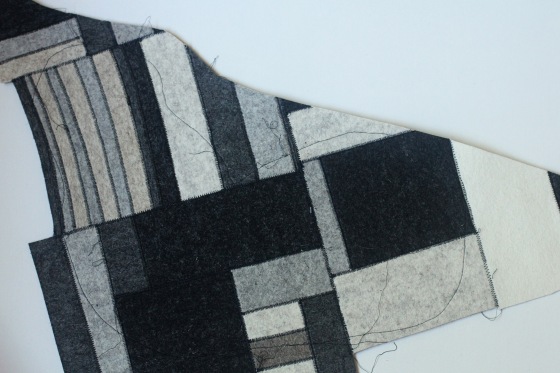
- Continue this process of iron-baste-cut for your other pieces.
Now for the mane.
- Wrap your yarn around some stiff card board, or a book. It should be about 5 inches wide and at least 7 inches long.
- Wrap it a lot, but if you find you still need more yarn for your mane, you can always wrap more, so don’t worry about it too much.
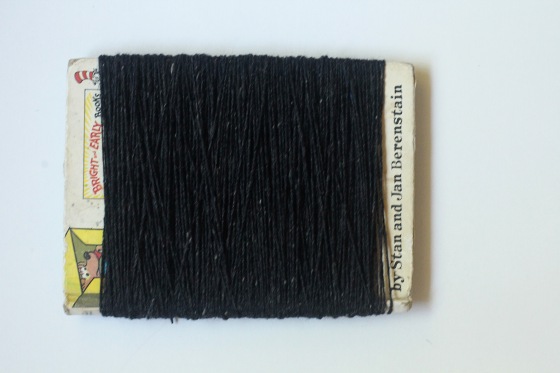
- Now cut the yarn along to top.
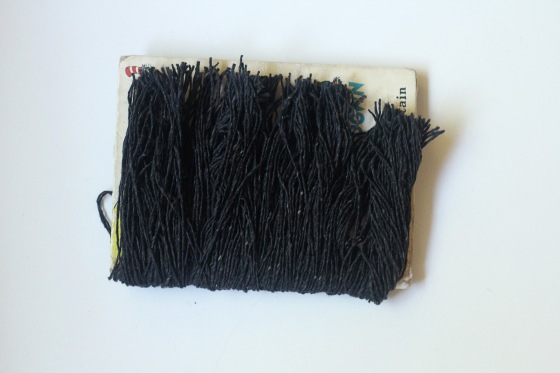
- Then cut along the bottom. This will give you a bunch of yarn approximately the same length for the mane.

- This picture is to show you about where on your gusset piece to start sewing the mane.
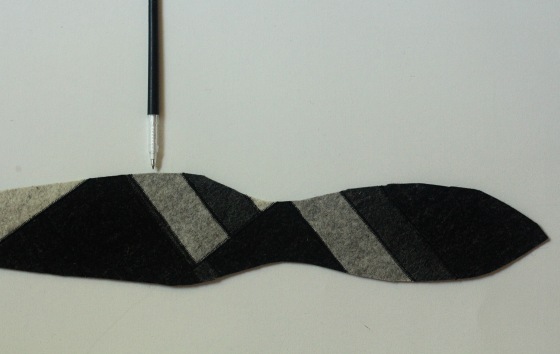
- Now sew the yarn down. Start with about an inch bunch of yarn.

- Using a small stitch length, start sewing the yarn, about 3/4ths of an inch in from the edge of the gusset. Continue to add more yarn, a couple inches at a time, and sew all the way down till about 4 inches from the bottom of the gusset piece. You’ll want to use about 2/3rds of your cut yarn for this.

- Then sew down the other side of the gusset over the yarn, about 3/4ths inch from the left side.

- Now finish by sewing 1-inch bunches of yarn right down the middle of the gusset.
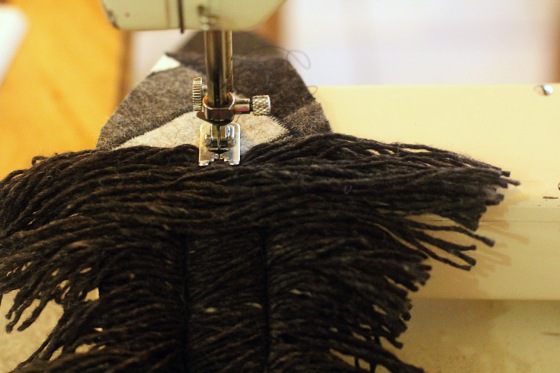
- When you are done sewing, it will look like this:

- Yes, not very mane-like, but never fear. Just start to mess it up with your fingers, and hey-presto, you’ve got a nice full mane going on.

Sew your horse head together.
- Okay, here’s where I apologize for the lack of great explanation and pictures for this step. But hey, it’s a free tutorial, so you get what you pay for, right? (nervous laugh) Generally, you are going to sew all the pieces together, right sides together, leaving the bottom of the neck open, and then turn the whole thing out. This is how I did it. I pinned the one side of the horse’s head to the gusset. The pointy part of the gusset will sit about where the little notch is at the bottom of the mouth, and the rest just follows along the top part of the horses head. Make sure when you pin, that you have the side piece facing up, because you will want to sew along your basting stitch. Also, make sure you have all the yarn from the mane tucked out of the way where you are going to be stitching.
- Sew from the tip of the gusset to the bottom of the horse’s head, but don’t sew all the way to the end of the gusset piece. Try to follow your basting line as close as possible.

- Now line up the other head side so that it is in about the same position as the sewn side of the head, in relation to the gusset piece, pin, and sew. (Again, follow the basting stitch, and make sure to keep the yarn from being trapped underneath your stitching.
- Now, pin the bottom side of the horses muzzle and neck together, feeling to see that the basting stitches of the two sides line up as closely as possible. Sew from the point of the nose gusset down to the bottom of the neck. Actually, I started by sewing about an inch from the end of the nose gusset, up to the point, because starting the stitching with all those layers is hard on my machine. It’s easier for me to get the machine going before powering into that thick part. Then I turned the piece around, and sewed down the bottom of the muzzle to the end of the neck.

- Leave about a 4-inch opening in the bottom of your horse head. This is approximately what you’ll have:


- Now reach in, grab the horse by the nose and gently turn it right-side out.

- Here’s your horse all sewn up.

Finishing your hobby horse. This part happened right before we moved back to the states, so the pictures didn’t really happen as much. Sorry about that.
- First, I transferred the pattern pieces for the ears to the felt using the basting technique I mentioned before.
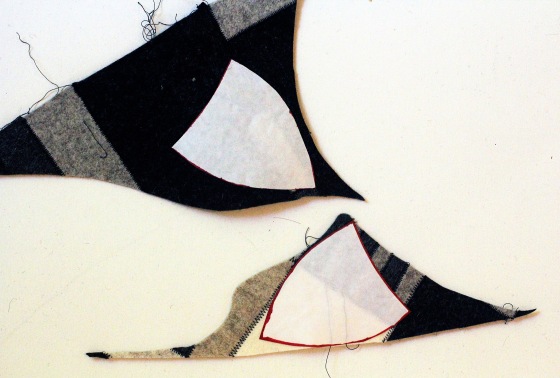

- Remove the freezer paper. Then zig-zag stitch all the way around the piece. Then cut it out right next to the zig-zag stitch.
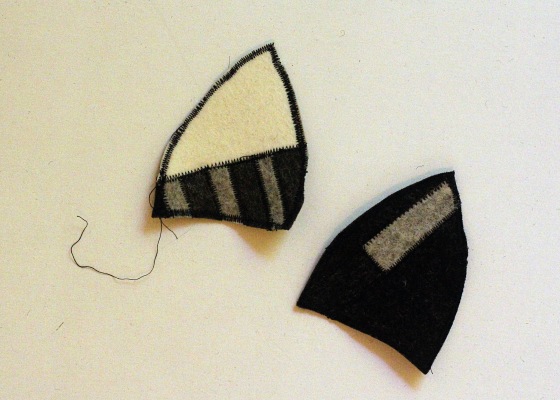
- Now here is where you have options. You can leave your ears flat and stitch them on, or you can stitch the bottom corners together and then whip stitch them on kind of sticking out, like I did.
- Sew the eyes on like you would any button. Make sure to make it really strong, because little hands will be rougher than you expect.
- Stuff that thing. I mean really stuff it. I filled mine with some wool, but you can use fiberfill or whatever you like. I packed the wool in really tightly. Once you get fill to about in line with the bottom of the chin, go ahead and stick the, well, stick, up in there, and pack the stuffing around it. I didn’t use any adhesive or special tricks to get the stick to stay stuck, I just packed the filling tight. Yes, your kid can get it out, but you just stuff it back in, if that happens. If you’ve packed it tight enough, a hollow space for the stick will remain if the stick is removed, as long as you don’t crush the head down after removing the stick. Does that make sense? Hope so.
- Finally, you’ll want to slip stitch up the bottom. I just tucked any loose ends in around the stick (if the end of the gusset piece is really long, you can trim it down). Then I slip stitched with heavy-duty sewing thread up and down both sides of the opening to make sure it was really secure. (For some pictures and further explanation of the slip stitch I used, see this post.)
Here they are, ready to ride. You may notice those dandy little felt bridles (my favorite part of the whole project, go figure). Well, those are just some long pieces of felt that I magic braided (but really, you can just regular braid some felt and stitch the end so it stays braided) and then fashioned into a simple loop and halter piece. The d-shaped loops are optional, but they sure add a feeling of authenticity. 
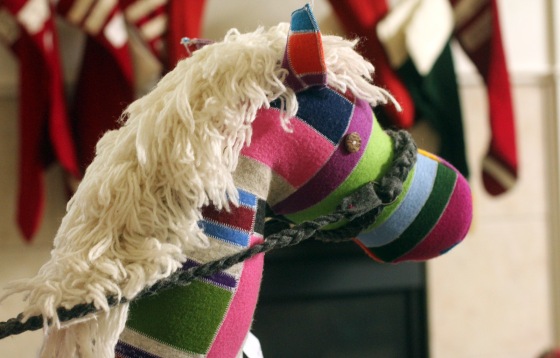 Enjoy! Seriously, you might want one for yourself. You’ve been warned.
Enjoy! Seriously, you might want one for yourself. You’ve been warned. 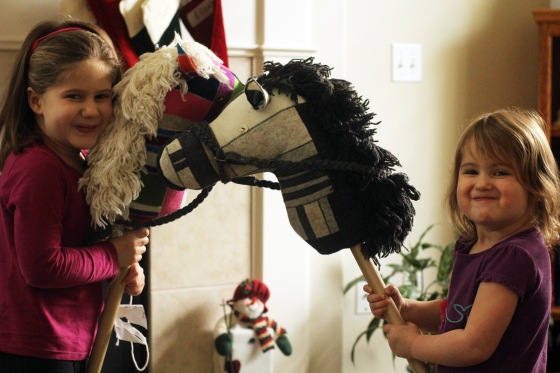
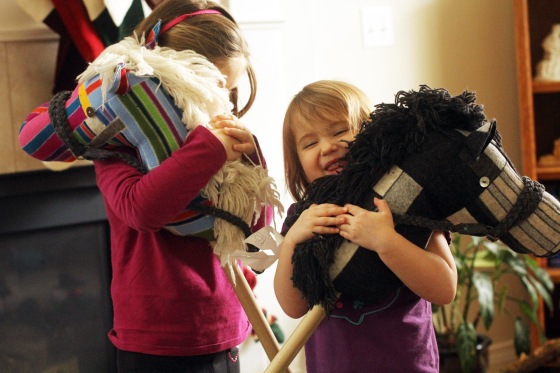
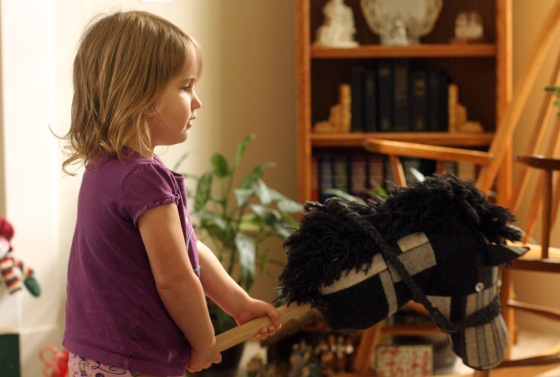
Have a great Wednesday!

